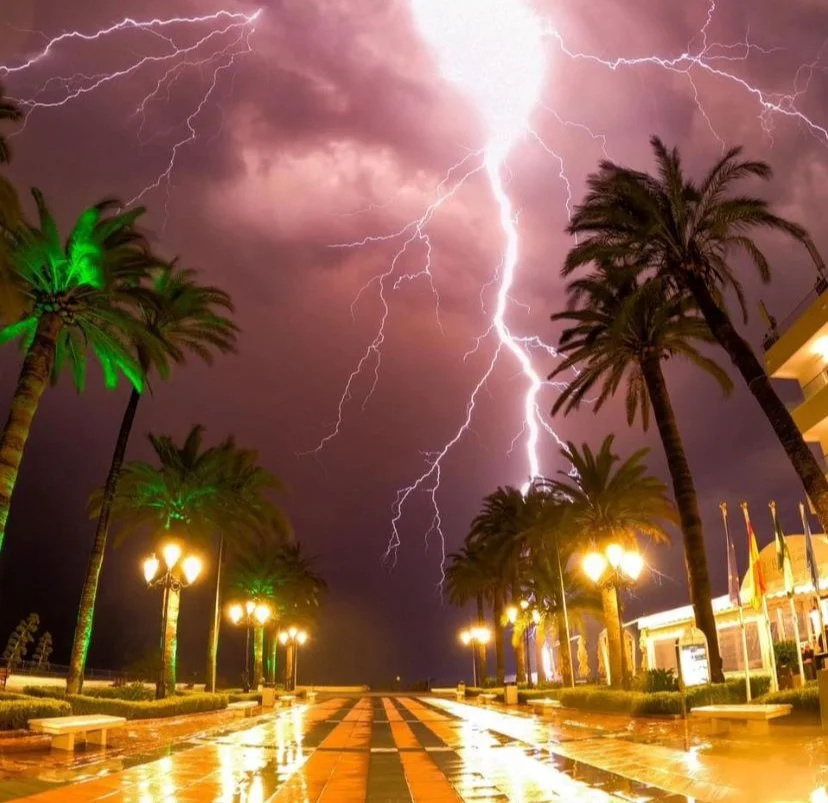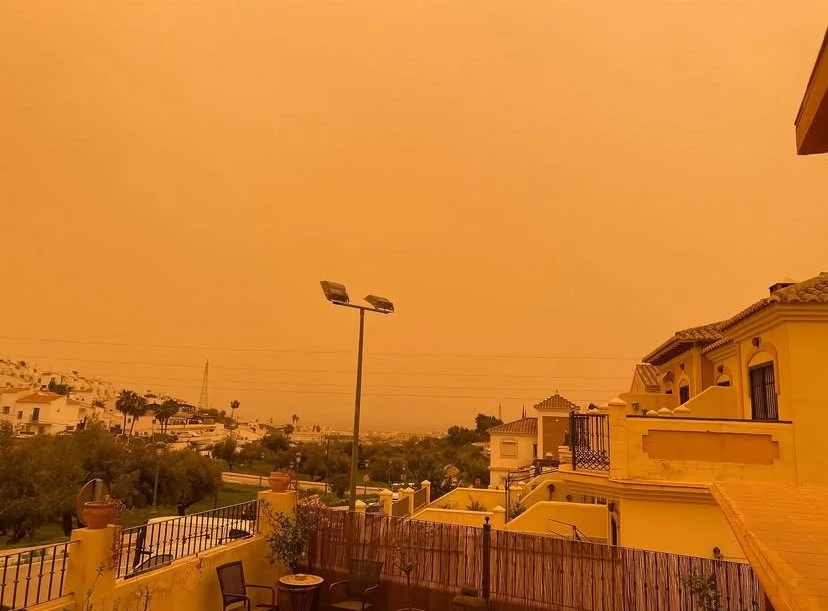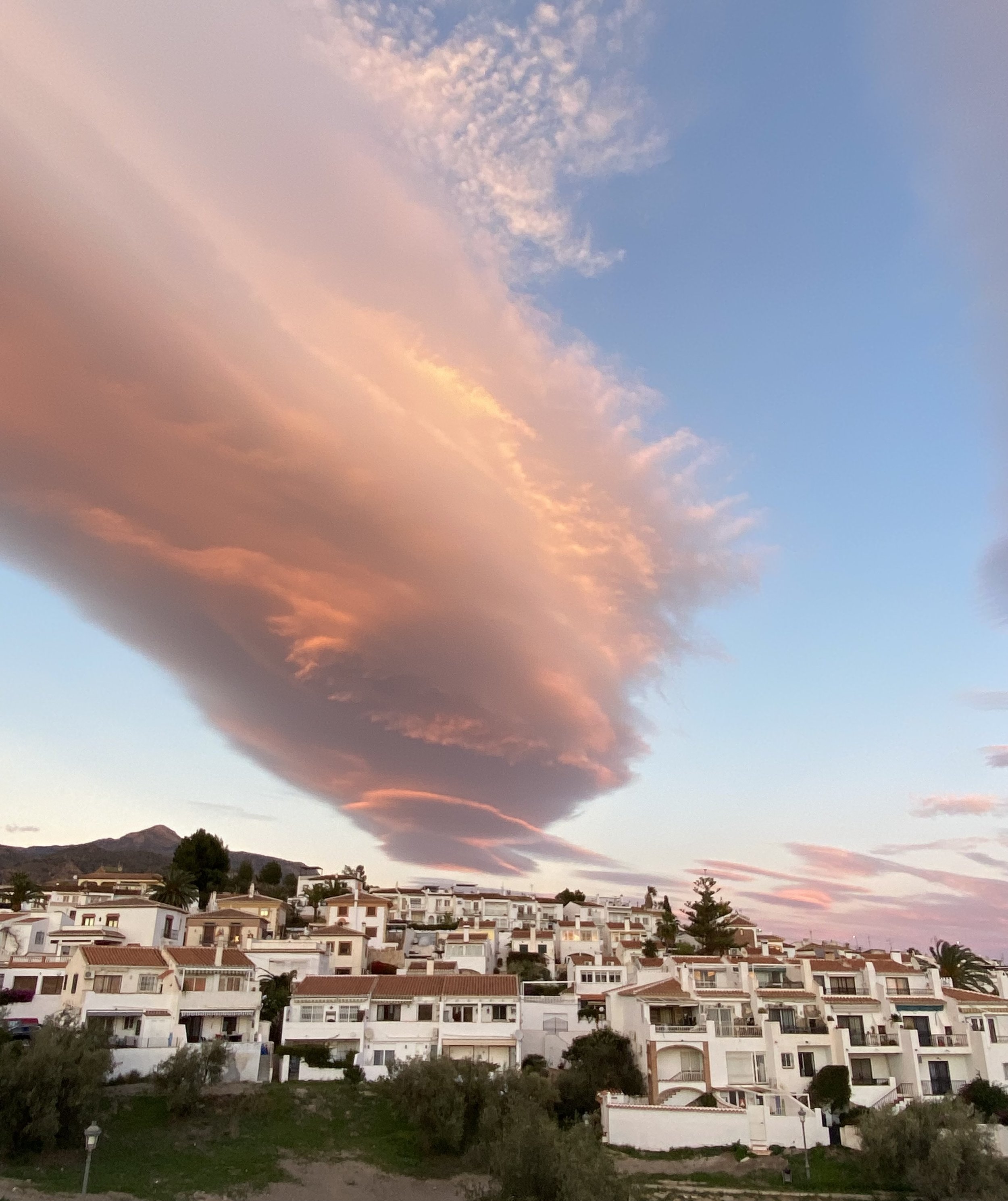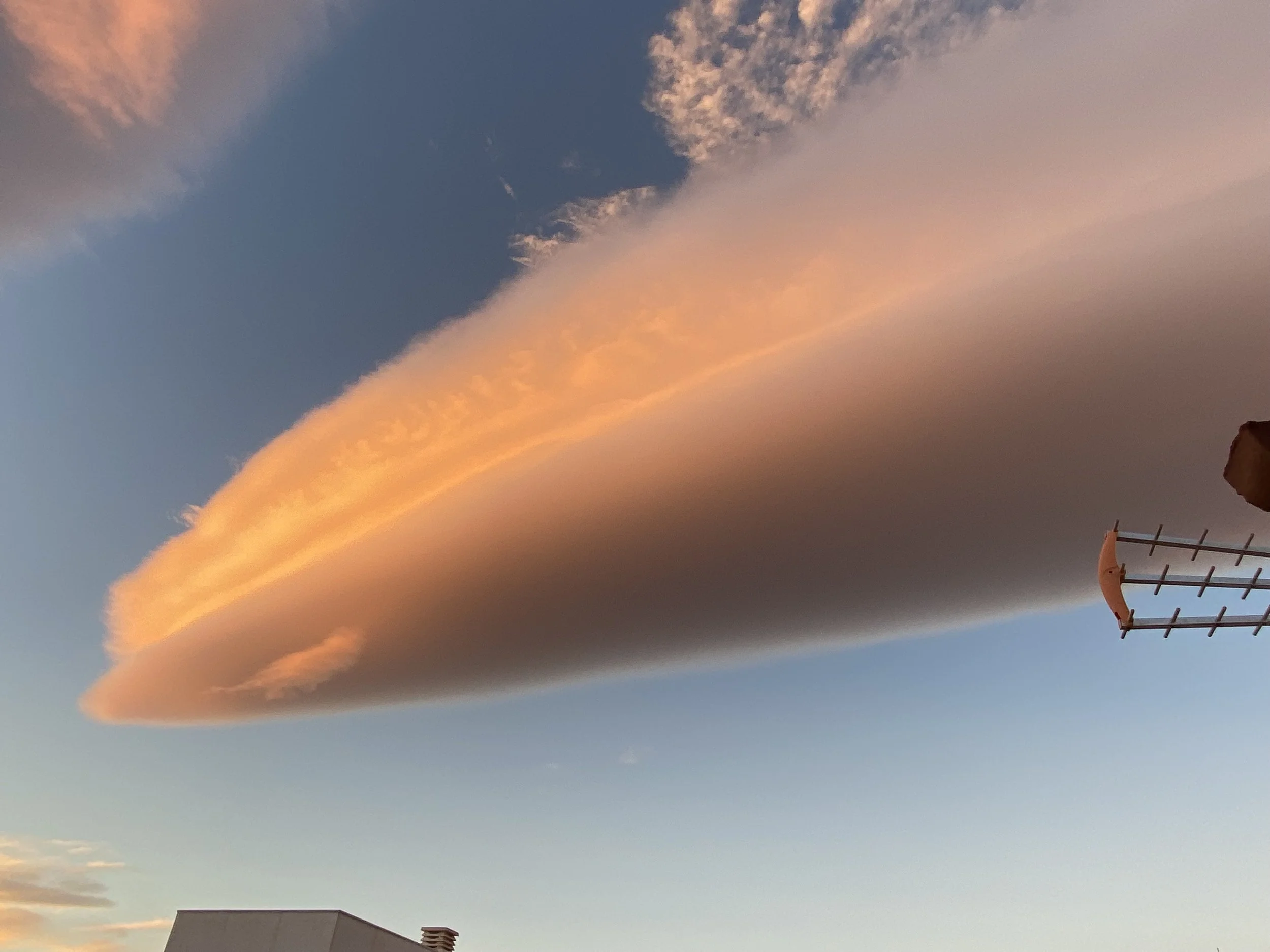Weather Phenomena in Nerja - A Guide to the Winds, Dust, Fog and Sudden Shifts
Saharan Calima
From time to time, a veil of Saharan dust reaches Nerja, softening the sky into pale golds and muted tones. This is calima, carried by winds from North Africa. The air becomes warmer, the horizon looks hazy and a fine layer of dust settles on terraces and cars. Most calima episodes are gentle and pass quickly, but occasionally they arrive with astonishing force. In March 2022, the calima was so overwhelming that it felt almost like watching an apocalypse arrive. The sky turned deep orange in the middle of the day, the light changed completely, and the famous white villages of Andalucía became rusty red within hours. Houses, balconies, cars, streets and even church towers were coated in thick desert dust. People started washing it away, only for another wave to return a couple of days later. It took weeks for towns and villages to clean everything, and even today you can still find faint traces of that extraordinary event in corners, rooftops and sheltered walls. When such a calima finally lifts, the sky often returns with almost startling clarity.
Tropical Nights
During mid and late summer, temperatures sometimes remain above twenty degrees even after midnight, creating what locals call tropical nights. These evenings feel long and unhurried, perfect for strolling the Balcón de Europa, chatting on terraces or enjoying late dinners outdoors. They usually follow hot days or warm winds and give Nerja its unmistakable Mediterranean summer rhythm.
Humidity Shifts
Nerja’s humidity gently rises and falls depending on the winds. Moist air arriving from the east can make the temperature feel warmer and heavier, while dry air from the west brings a crisp lightness that instantly refreshes the town. These subtle changes are easy to feel, especially in summer when two days with the same temperature can feel completely different.
Sudden Rain Showers
Although Nerja is known for its dry climate, rain occasionally arrives quickly and with surprising strength. Short autumn and spring showers can sweep in from the mountains, sometimes with a rumble of thunder echoing through the valleys. Because the Sierra Almijara rises so steeply behind the town, clouds often form inland while the coast remains bright. After a shower, the air feels washed clean and the landscape often glows with deeper colour.
Morning Sea Fog – The Taró
On warm mornings, especially in early summer, a soft sea fog known as taró drifts along the coastline. It forms when the warm sea meets the cool early air, creating a delicate mist that moves slowly over the water and slips into the coves. Watching it from the Balcón de Europa is almost magical as the fog rolls gently across the sea, hiding and revealing the rocks below. From the beach it looks like a soft white blanket lifting and falling over the waves, turning the morning into something calm, cinematic and a little mysterious before it melts into bright blue skies.
Thermal Breezes
Nerja’s unique position between mountains and sea creates natural thermal breezes that help regulate the temperature. During the day, the sea breeze moves inland and cools the town, while at night the mountain breeze flows outward, keeping evenings pleasant. This gentle, natural cycle contributes to Nerja’s famously comfortable climate, even during the hottest weeks of the year.
The Sudden Hot Breeze
Every so often, usually in late spring or summer, Nerja experiences a sudden blast of hot air that can raise the temperature by five to ten degrees within minutes. This happens when a pocket of warm, dry air descends rapidly from the mountains and mixes with the coastal breeze. The change is instant: the air turns hot, the horizon shimmers and for a brief moment it feels as if someone has opened an oven door into the town. These bursts pass quickly, leaving behind a warm stillness before the sea breeze returns and settles the temperature again.
UFO Clouds over the Mountains
Another fascinating sight in Nerja is the appearance of lenticular clouds, which often form above the Sierra Almijara. These smooth, perfectly curved clouds stack themselves in layers that look almost sculpted, giving them the appearance of floating discs or UFOs hovering above the peaks. They form when strong winds hit the mountains and curl into waves of air that shape these unusual forms. On clear days they look surreal against the blue sky, and at sunset they glow in soft pinks and oranges. When they appear, people on the beaches and the Balcón stop to take photos because they truly look like something from another world.
The Levante Wind
The Levante is an easterly wind, blowing from the east across the western Mediterranean. When it reaches Nerja, it often brings warmer air, a heavier feeling of humidity and a more unsettled sea. Waves grow stronger, the coastline becomes livelier and the air takes on a warm, slightly charged energy. Levante episodes can be short or last several days, and although they make the sea rougher, they also bring a unique Mediterranean atmosphere that locals recognise instantly.
The Poniente Wind
The Poniente is a westerly wind, blowing from the west towards the Spanish Mediterranean coast. In Nerja, it usually brings clearer skies, drier air and a refreshing drop in humidity. The atmosphere becomes crisp, the horizon sharpens and walks through the old town feel lighter and more comfortable. Depending on inland conditions, Poniente can occasionally arrive as a warm, dry wind if the air has been heated over the land, but along the coast it is most often experienced as a cleaner, fresher breeze that stabilises the weather and leaves the town feeling bright and calm.




